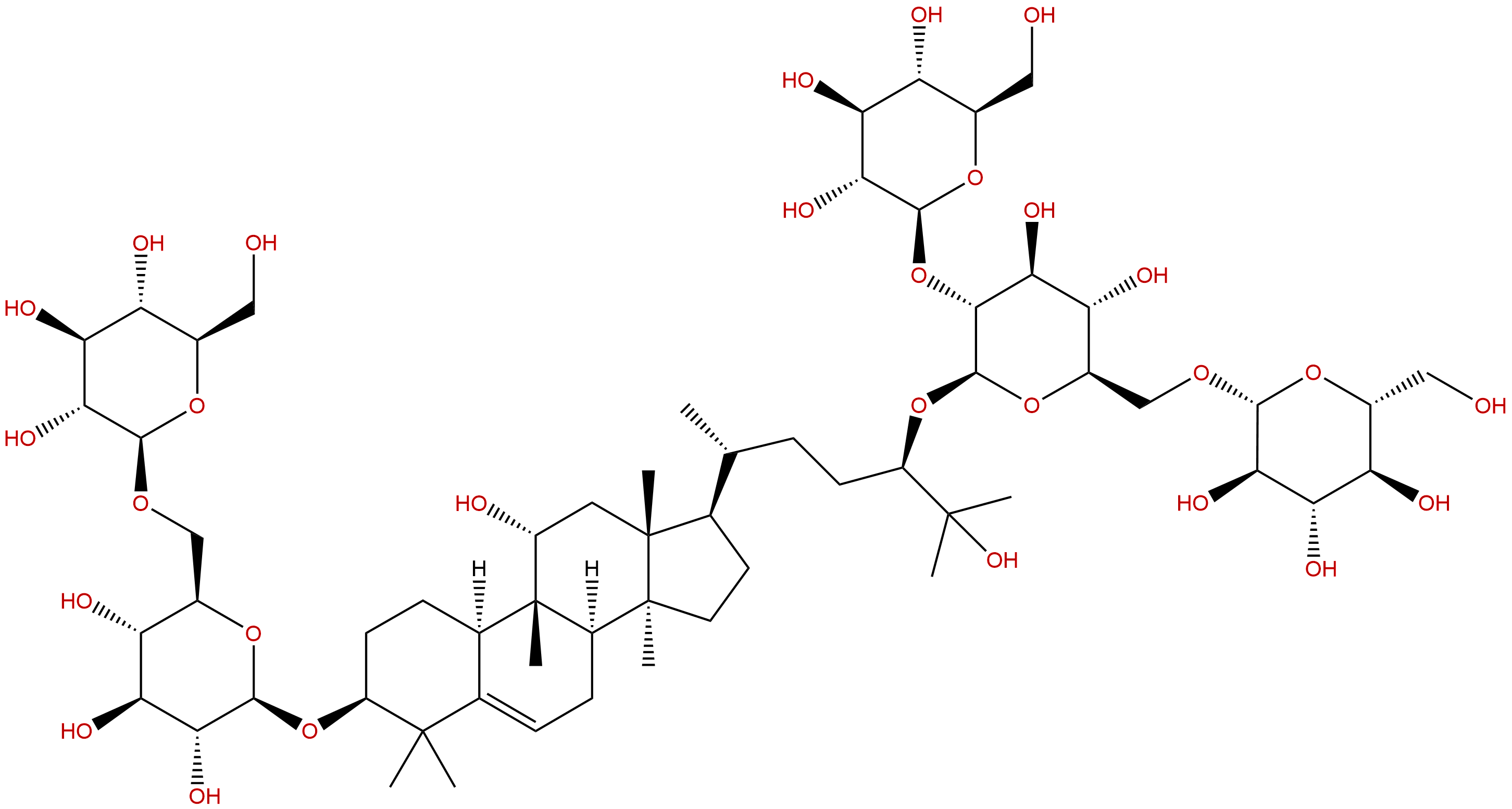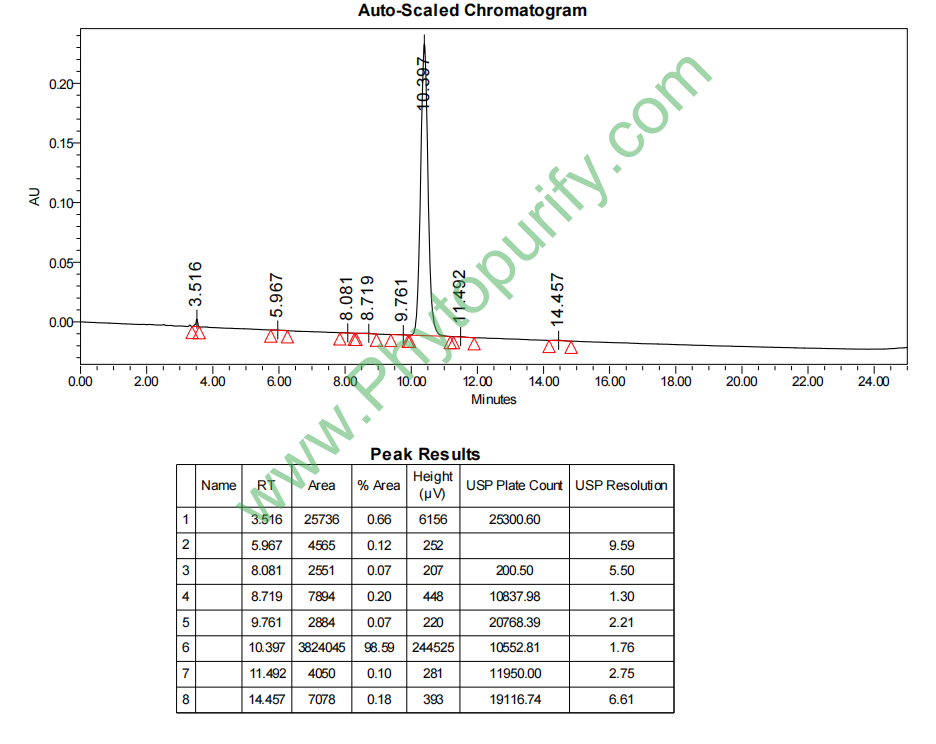
Mogroside VCAS No.:88901-36-4
|
||||||||||
 |
|
|
||||||||

| Catalogue No.: | BP0953 |
| Formula: | C60H102O29 |
| Mol Weight: | 1287.45 |
Product name: Mogroside V
Synonym name:
Catalogue No.: BP0953
Cas No.: 88901-36-4
Formula: C60H102O29
Mol Weight: 1287.45
Botanical Source: Momordica grosvenorii and Siraitia siamensis; Luohanguo
Physical Description: Powder
Type of Compound: Triterpenoids
Purity: 95%~99%
Analysis Method: HPLC-DAD or/and HPLC-ELSD
Identification Method: Mass, NMR
Packing: Brown vial or HDPE plastic bottle
Storage: Store in a well closed container, protected from air and light. Put into refrigerate or freeze for long term storage.
Whenever possible, you should prepare and use solutions on the same day. However, if you need to make up stock solutions in advance, we recommend that you store the solution as aliquots in tightly sealed vials at -20℃. Generally, these will be useable for up to two weeks.
The product could be supplied from milligrams to grams, up to kilograms
Inquire for bulk scale.
Descriptions:
Mogroside V, a compound isolated from Momordica grosvenori Swingle, which belongs to the Cucurbitaceae, is a traditional Chinese medicine reported to have anti-inflammatory potential in murine macrophages and a murine ear edema model, mogroside V has the potential to protect against LPS-induced airway inflammation in a model of ALI.[1]
Mogroside V is a widely used sweetener. [2]
Mogroside V has in vitro AMPK activating effect.[3]
References:
[1] Shi D, Zheng M, Wang Y, et al. Pharm Biol, 2014, 52(6):729-34.
[2] Feng X, Li D P, Huang Z C, et al. J Pharm Biomedl Anal, 2015, 115(11):418-30.
[3] Luo Z, Qiu F, Zhang K, et al. Rsc Adv, 2016, 6(9):7034-41.
[4] Hu JY Ma SC Cheng X L, et al. Chinese Journal of Pharmaceutical Analysis, 2008(04):544-6.
HPLC of Mogroside V
